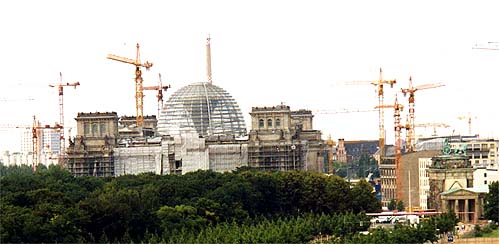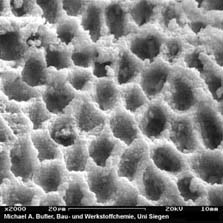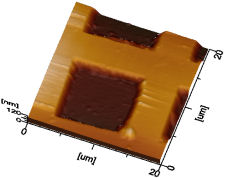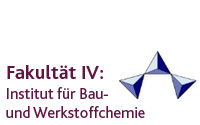History of the Institute
The Institute for Building- and Materials Chemistry at the University of Siegen
| | ||||||||
 | ||||||||
| The targeted modification of natural materials in order that they can be used for certain purposes has lastingly influenced the development of mankind. Important stages in this process were the production of ceramics, the production of metals and of inorganic building materials. Today, we have a broad spectrum of the most diverse inorganic and organic materials, as well as inorganic-organic composite materials, which represent an important basis for the social, cultural and economic development of society. New materials developed today are predominantly custom-made with the intention of achieving optimal characteristics. The central idea for such development to be sustainable must be the integration of ecology, economics and society. The production and processing of materials is predominantly connected with material-changing (chemical) processes, and this applies also to the corrosion and environmental behavior of materials. Therefore, chemistry, in addition to other natural sciences and to the engineering sciences, plays a key role during the development and optimization of new materials. This applies in particular to those materials which are used for building. The most important material for the building industry is concrete: it is the mass building material of our time. The production of concrete takes place using the inorganic bonding agent cement. Cement is the product which, world-wide, is manufactured industrially in the greatest quantity (about 1.6 billion tonnes per annum). Improvements in the mechanical properties and the durability of concrete have, therefore, great economic importance. This applies also to the use of residual substances (cinder, ash and types of particulate matter) and to the reusability of the material. | ||||||||
 | ||||||||
 | ||||||||
| Today, a very large number of different building materials and other auxiliary materials are available, and are constantly being further developed. Many materials, such as binding materials, ceramics and glasses, are high-tech products with optimized characteristics. They have been developed to meet increasing demands with regard to better workability, durability, and to save energy and other resources. Without sufficiently detailed chemical knowledge, neither development of appropriate materials, nor an understanding for the complex interactions with the environment which arise, are possible. The development of new building and other materials requires, above all, the extension of knowledge of the significant processes to ever smaller dimensions, covering the micro and nano-areas. Hence, research and teaching in our institute place emphasis on these topics. Close co-operation with the research groups of the Center for Micro and Nano-Chemistry at the University of Siegen, as well as research co-operation with national and international scientific institutes and industry, creates the ideal climate for such research work. The University of Siegen is one of the few locations in Germany which offers a well-founded modern academic training program in the interdisciplinary area of building and material chemistry. The Institute for Building and Materials Chemistry was founded by Prof. Dr. Dietbert Knoefel, continued its successful tradition in teaching and research under Prof. Dr. Reinhard Trettin and is now chaired by Dr. Christian Pritzel (Ak.Rat). | ||||||||

